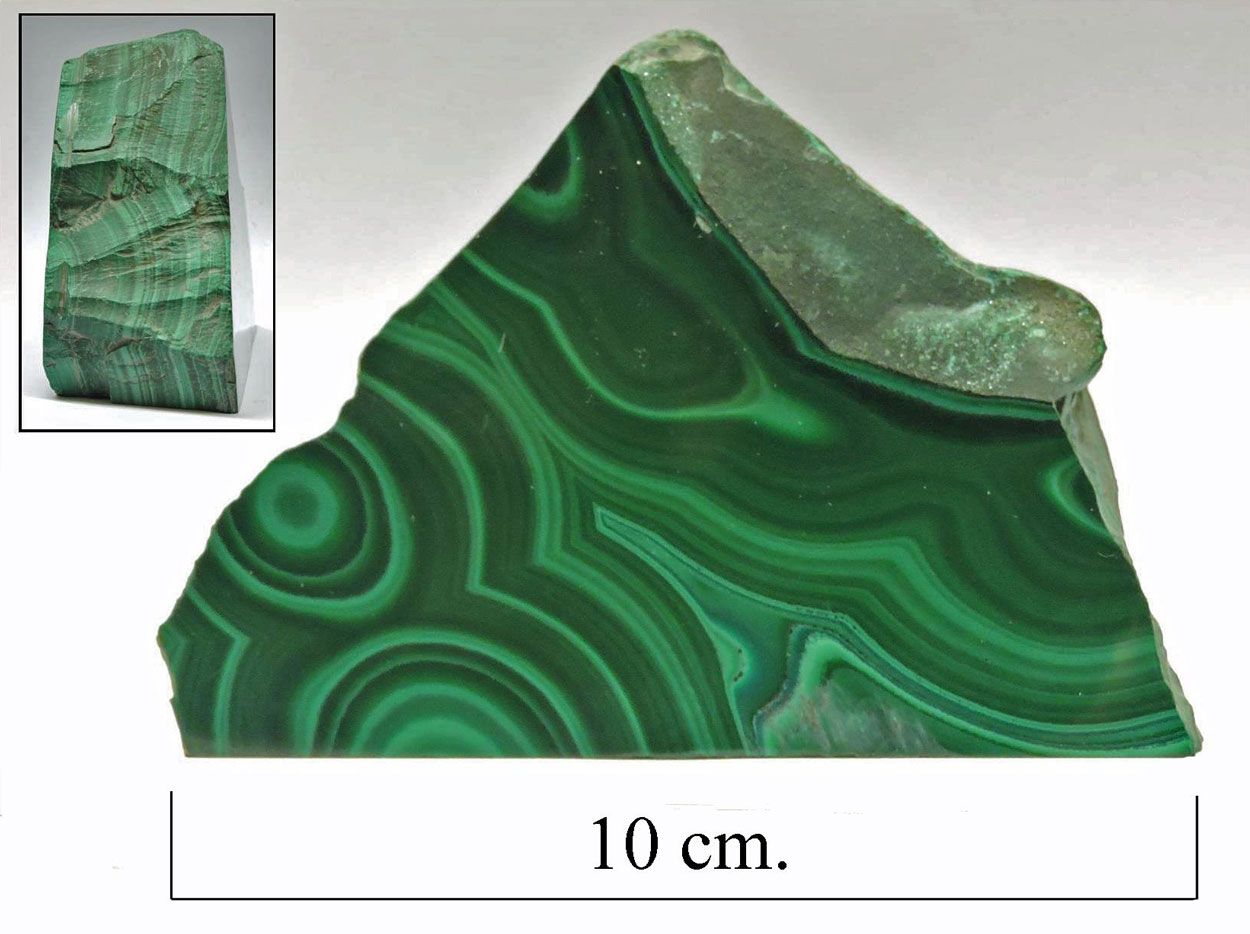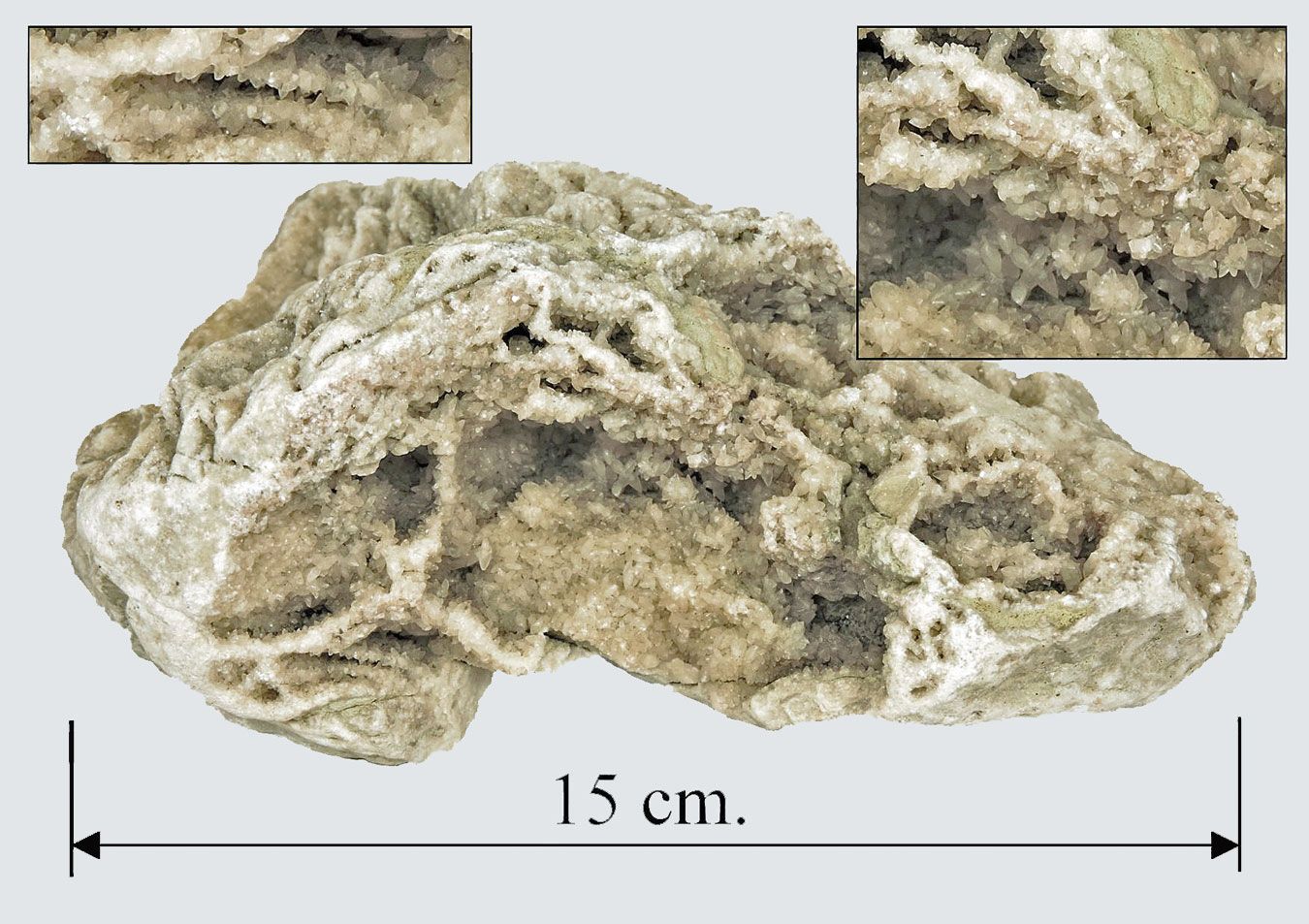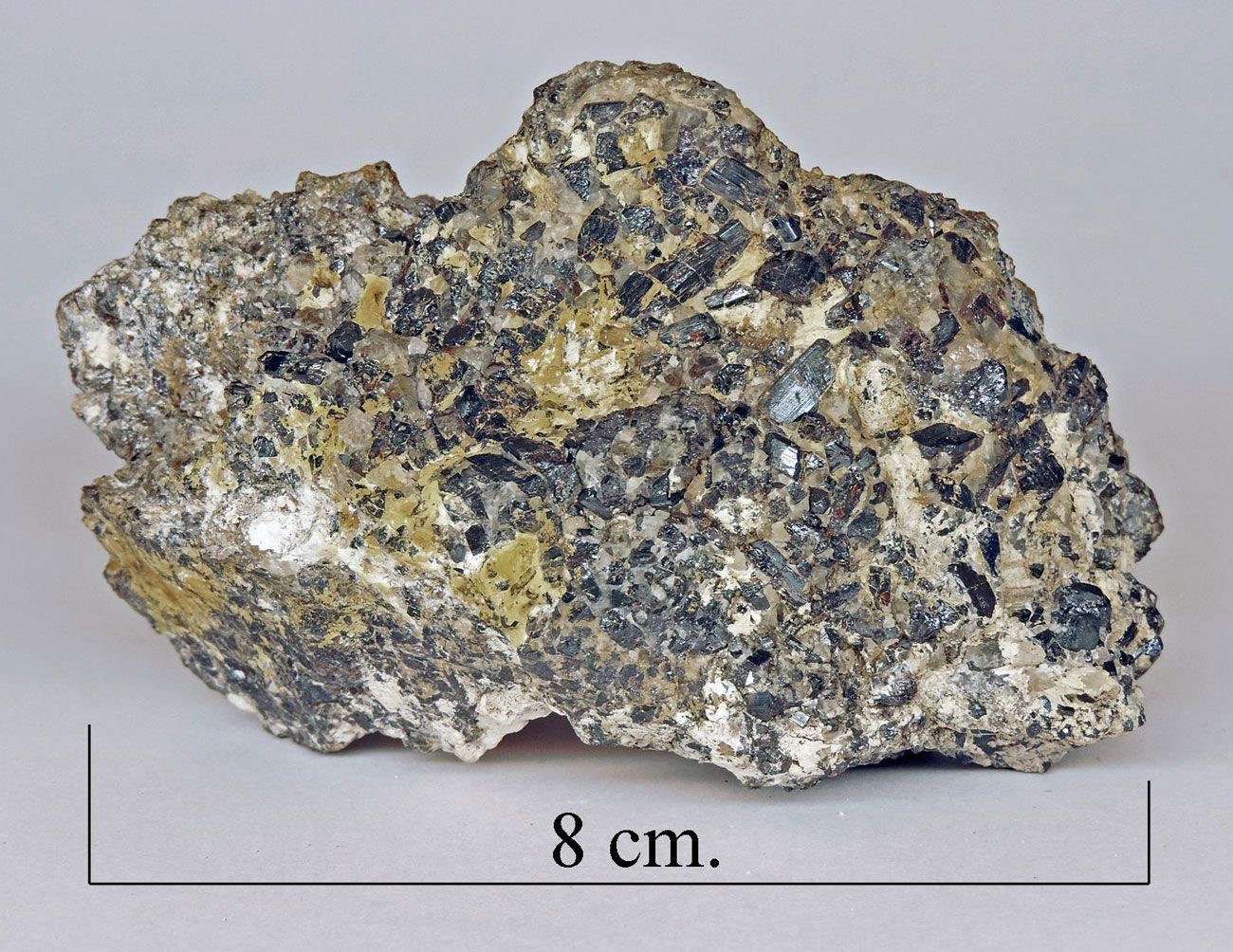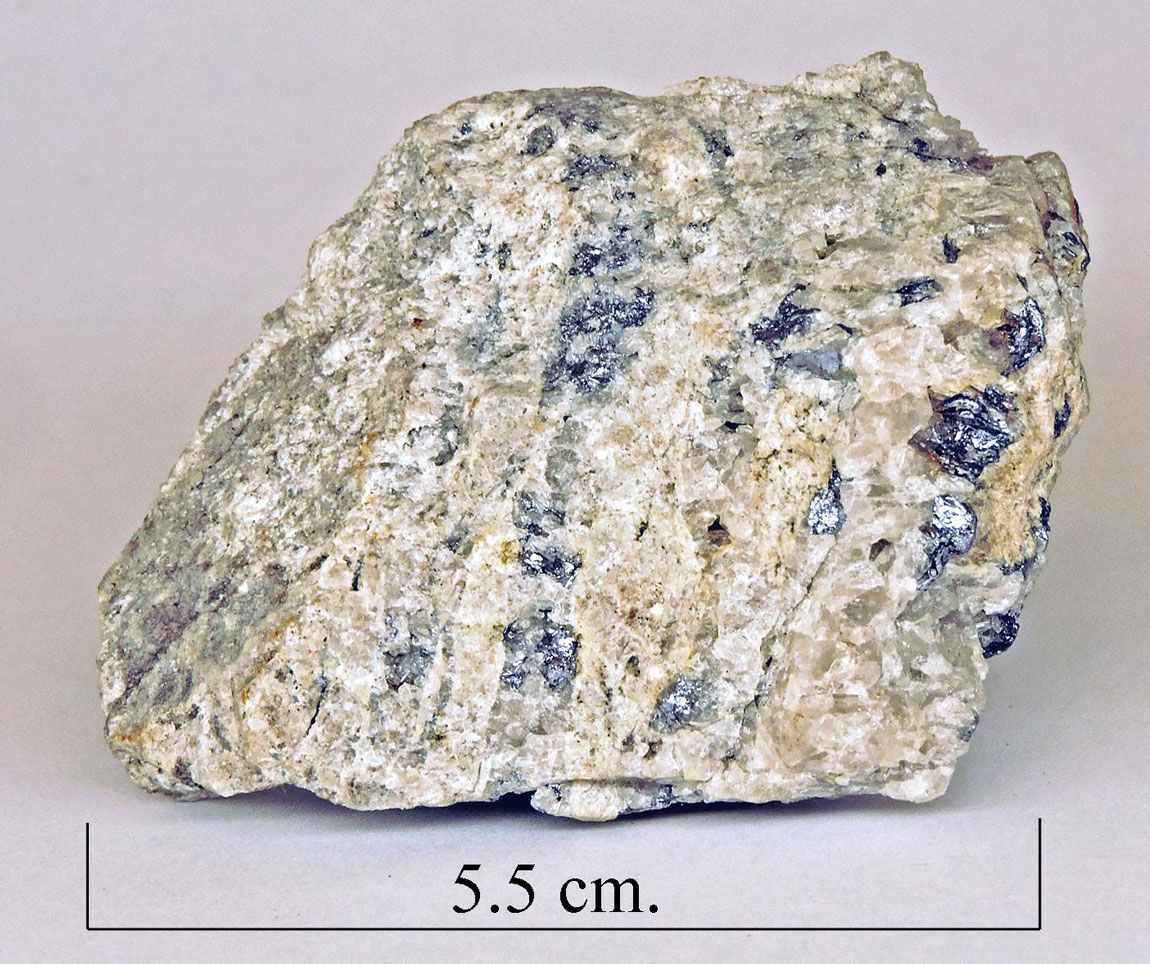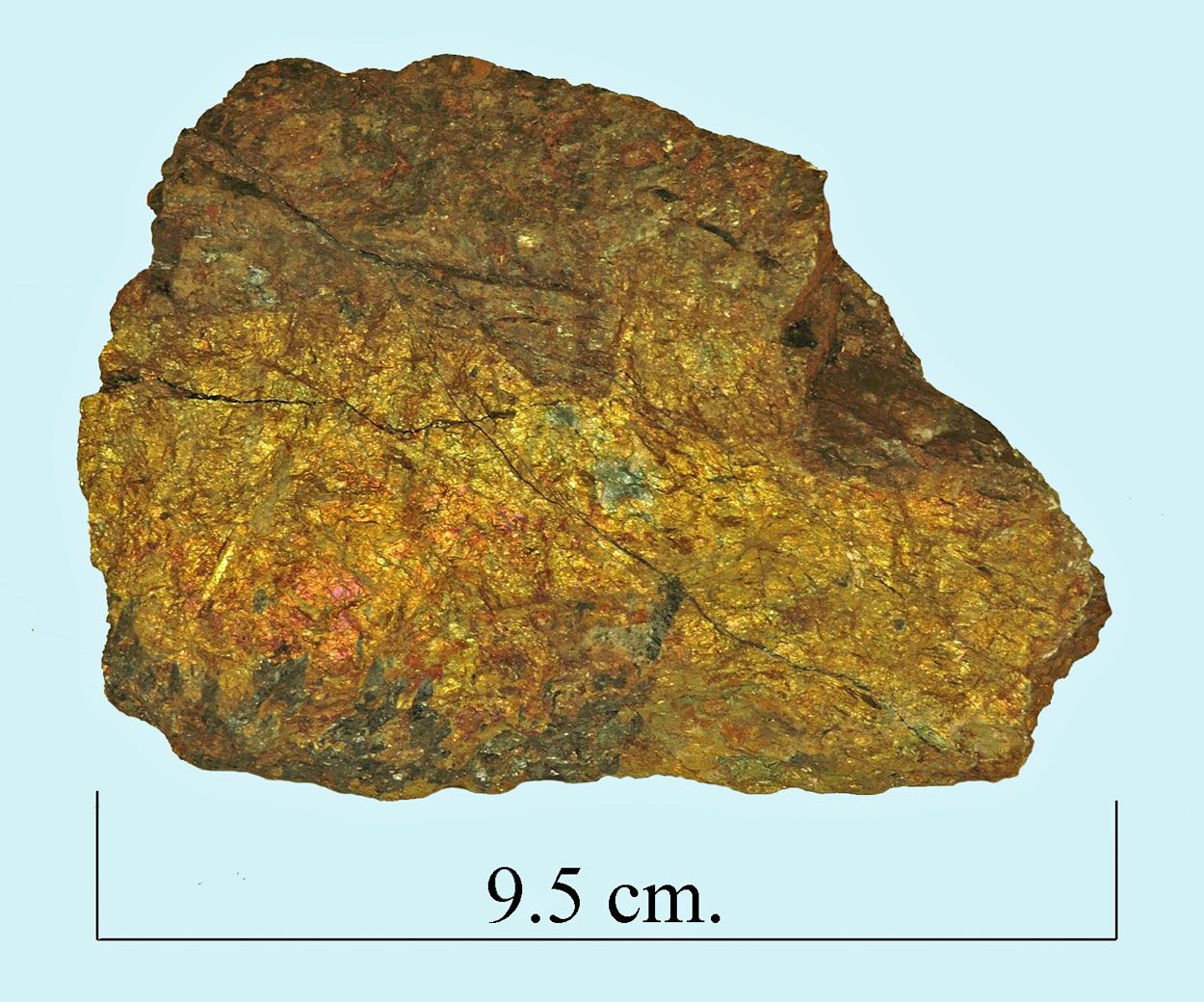
Bornite.
Bornite often has an iridescent surface, and for this reason is popularly known as "Peacock ore" It is a sulphide mineral, composed of copper and iron with the formula Cu5FeS4 It is an important copper ore, widely occurring in porphyry copper deposits. There can be a wide variance in the amounts of copper and iron, and also a wide variance in coloration. This particular specimen, collected from Broken Hill in South Australia, is probably below average in brilliant coloration, but nevertheless is an interesting specimen.
